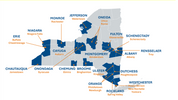Section 1110 of the CARES Act allows eligible entities to apply for and receive Economic Injury Disaster Loans (EIDL) and loan advances from the U.S. Small Business Administration (SBA) for a period beginning on January 31, 2020, and ending on December 31, 2020. EIDL allow an eligible entity to receive up to $2 million as a low interest loan (3.75% for small businesses and 2.75% for non-profits). Terms may be up to 30 years, with the first payment due one year after the date the loan was issued.
Am I eligible?
Eligible entities are: (1) businesses with 500 or fewer employees; (2) sole proprietors; (3) independent contractors; (4) co-ops with 500 or fewer employees; (5) employee stock ownership plans (ESOP) with 500 or fewer employees; (6) tribal small business concerns with 500 or fewer employees; and (7) most private non-profits of any size. Applicants suffering substantial economic injury in any of the 50 states may apply for an EIDL. Applicants must have been in business prior to January 31, 2020.
How do I get approved?
Approval for an EIDL may be based solely on the applicant's credit score and ability to repay. Applicants are not required to submit a tax return.
Is there really a $10,000 advance?
Applicants also may request an advance, called Emergency Economic Injury Grants, of $10,000 once they apply for the EIDL. This advance does not need to be repaid, even if the application for an EIDL subsequently is denied. Additionally, advances can be awarded within three days of applying for the EIDL.
Is there collateral required? A personal guarantee?
EIDL greater than $25,000 require collateral, which will be in the form of real estate, if possible. If there is no such collateral available, the SBA will try to work towards a favorable decision.
There is no personal guarantee required for loans less than $200,000.
What can I use the EIDL for?
An EIDL may be used for costs and expenses that the applicant could have met had the COVID-19 crisis not occurred. These costs and expenses include: (1) providing sick leave to employees who cannot work as a direct effect of COVID-19; (2) payroll; (3) increased costs to purchase materials that now are unavailable from the applicant's usual source; (4) rent or mortgage payments; and (5) debt.
What if I already have a PPP Loan?
If an applicant already has received a Paycheck Protection Program (PPP) Loan, broken down in our March 29, 2020, post (https://insights.colliganlaw.com/post/102g3bu/breaking-down-the-cares-act-small-business-loans), it still may apply for and receive an EIDL. It cannot, however, use the EIDL for the same purpose as the PPP Loan. That is, if the applicant uses the PPP Loan to pay employees in June, it cannot use the EIDL to pay those same employees in June. It can, though, use the EIDL to pay other employees in June or the same employees in another month or for a completely different purpose.
Further, if an applicant receives an EIDL in addition to a PPP Loan, or refinances an EIDL into a PPP Loan, any advance on the EIDL would be reduced from the amount forgiven in the PPP Loan.
Sources
S. 3548, Coronavirus Aid, Relief, and Economic Security (CARES) Act, https://www.documentcloud.org/documents/6819239-FINAL-FINAL-CARES-ACT.html.
U.S. Senate Committee on Small Business & Entrepreneurship, "The Small Business Owner's Guide to the CARES Act," https://drive.google.com/file/d/1lR2FsEXxsl3WF8O639TCHSf33S7kWtWa/view.
U.S. Small Business Administration, Baltimore District Office, "Applying for SBA Economic Injury Disaster Loans (EIDLs)," https://www.sba.gov/sites/default/files/resource_files/EIDL-BDO_Presentation_March_26_0.pdf.
The loan advance will provide economic relief to businesses that are currently experiencing a temporary loss of revenue. Funds will be made available within three days of a successful application, and this loan advance will not have to be repaid.
 unknownx500
unknownx500










